High Energy
Welcome, Prof. Mariel Pettee!

Interdisciplinary physicist Mariel Pettee uses techniques grounded in machine learning to study a range of topics that span high energy physics and astrophysics, with an ultimate goal of developing a better understanding of the fundamental physical building blocks of our Universe.
Originally from Dallas, TX, Pettee was a physics and mathematics undergraduate at Harvard University, a master’s student in physics at the University of Cambridge, and a PhD student in physics at Yale University. While pursuing a postdoc at Lawrence Berkeley National Lab, she also joined the Flatiron Institute in New York City as a guest researcher. She then joined the UW–Madison physics faculty as part of the RISE-AI initiative in August 2025.
Please give an overview of your research.
My background is in high energy physics, and that training has fundamentally shaped the way I approach my work. But over the past several years, I have become more of what you might call a “data physicist” — someone with physics expertise who works at the intersection of physics and data science. In particular, I’m interested in how machine learning can help us do interdisciplinary physics research and make discoveries using massive experimental datasets that would otherwise be out of our reach.
On a broad scale, my research touches on high energy particle physics and astrophysics through the lens of machine learning. Some of my work applies recent machine learning techniques to domain-specific problems such as anomaly detection, object reconstruction, and unfolding. Another part of my work explores core questions in machine learning in areas such as self-supervised learning and likelihood-free inference in a physics-driven way. I’m also interested in developing large-scale foundation models for broader scientific use.
What are one or two main projects you’ll have your group focus on first?
The field of scientific foundation models has been rapidly taking shape over the last couple of years, but there are still a lot of open questions to explore. By researching what might make training foundation models on fundamental physics data distinct from training on more common industry-standard data, I think there is significant potential to understand our data more deeply.
I’m interested in simultaneously incorporating information from multiple heterogeneous layers of a detector, e.g. time series, images, and point clouds, as well as across detectors. Early projects in this direction will develop a variety of self-supervised learning strategies on multimodal HEP and astrophysics data to understand how models can simultaneously incorporate many different types of measurements of the same physics objects.
I’m also interested in studying stellar streams, which are remnants of ancient galaxies or globular clusters being absorbed into the Milky Way and serve as interesting tracers of local dark matter. The first step is to simply detect more of them using unsupervised or weakly supervised anomaly detection: trying to learn with no labels or with imperfect or missing labels. We can use machine learning models to automatically detect resonant anomalies in data, and stellar streams emerge as resonant anomalies in velocity space due to their constituents’ shared origin.
I’m optimistic that we will also eventually be able to use aggregate stream information to better map local dark matter substructure. Beyond their immediate physics use cases, streams can also serve as a nice testbed for understanding the limits of domain transfer for foundation models due to their resonant properties: perhaps particle physics data, with its 3D point cloud structure and “bump”-like anomalies, has more shared information with streams from the perspective of a foundation model than one might initially expect.
What attracted you to Madison and the university?
I felt a strong fit with Madison and the university from my first visit. I think that’s a combination of the general spirit of the department, how warm and open it felt, and how much I admired the researchers that I met when I was here. Also, the nature of the position that I was offered gave me the kind of flexibility that I dreamed of — to work and move between these spaces of high energy physics, astrophysics, and machine learning with a lot of freedom.
What is your favorite element and/or elementary particle?
Well, I have to pick a particle! I got into physics because of the Higgs boson. I started my physics career as an undergraduate at CERN on July 1st, 2012, and then the discovery of the Higgs boson was announced three days later. So I think I have the Higgs to thank for really getting me energized about this field. Waking up so early that morning, witnessing those presentations, seeing hundreds of people buzzing with excitement, scribbling on chalkboards, popping champagne corks — it made me feel like I was in the center of the universe.
What hobbies and interests do you have?
I love the performing arts of all kinds—contemporary dance, theater, music. I’m a dancer, choreographer, and occasional actor and director. I’m also an amateur birdwatcher.
“Rival” neutrino experiments NOvA and T2K publish first joint analysis
The combined results add to physicists’ understanding and validate the impressive collaborative effort between two competing — yet complementary — experiments.
This story was published by Fermilab
When the universe began, physicists expect there should have been equal amounts of matter and antimatter. But if that were so, the matter and antimatter should have perfectly canceled each other out, resulting in total annihilation.
And yet, here we are. Somehow, matter won out over antimatter — but we still don’t know how or why.
Physicists suspect the answer may lie in the mysterious behavior of abundant yet elusive particles called neutrinos. Specifically, learning more about a phenomenon called neutrino oscillation — in which neutrinos change types, or flavors, as they travel — could bring us closer to an answer.
The international collaborations representing two neutrino experiments, NOvA in the United States and T2K in Japan, recently combined forces to produce their first joint results, published October 22 in the journal Nature. This initial joint analysis provides some of the most precise neutrino-oscillation measurements in the field. The NOvA collaboration, centered at Fermilab, includes University of Wisconsin–Madison physicists in Brian Rebel’s group.
“These results are an outcome of a cooperation and mutual understanding of two unique collaborations, both involving many experts in neutrino physics, detection technologies and analysis techniques, working in very different environments, using different methods and tools,” says T2K collaborator Tomáš Nosek.
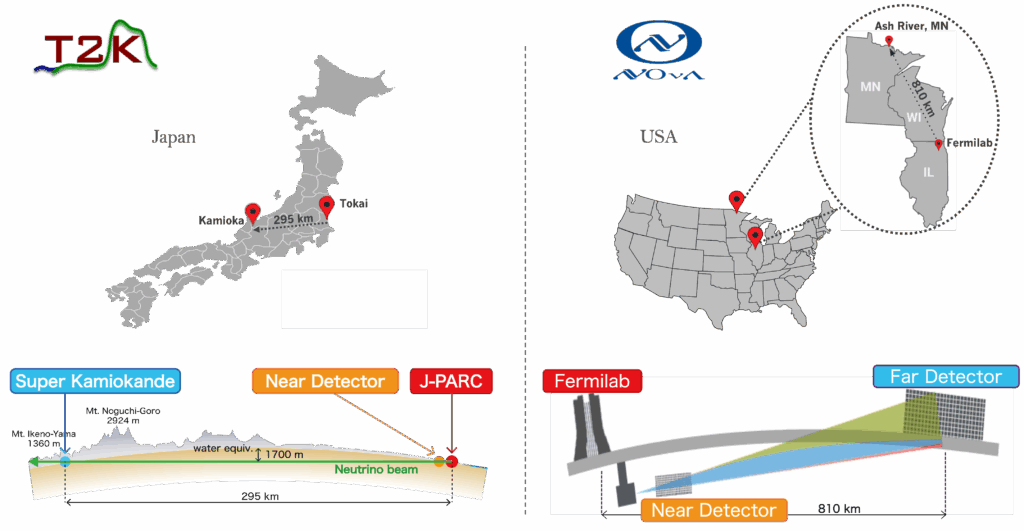
Different experiments, common goals
Despite their ubiquity, neutrinos are very difficult to detect and study. Even though they were first seen in the 1950s, the ghostly particles remain deeply enigmatic. Filling in gaps in our knowledge about neutrinos and their properties may reveal fundamental truths about the universe.
T2K and NOvA are both long-baseline experiments: they each shoot an intense beam of neutrinos that passes through both a near detector close to the neutrino source and a far detector hundreds of miles away. Both experiments compare data recorded in each detector to learn about neutrinos’ behavior and properties.
NOvA, the NuMI Off-axis νe Appearance experiment, sends a beam of neutrinos 810 kilometers from its source at the U.S. Department of Energy’s Fermi National Accelerator Laboratory near Chicago, Illinois, to a 14,000-ton liquid-scintillator detector in Ash River, Minnesota.
The T2K experiment’s neutrino beam travels 295 kilometers from Tokai to Kamioka — hence the name T2K. Tokai is home to the Japan Proton Accelerator Research Complex (J-PARC) and Kamioka hosts the Super-Kamiokande neutrino detector, an enormous tank of ultrapure water located a kilometer underground.
Since the experiments have similar science goals but different baselines and different neutrino energies, physicists can learn more by combining their data.
“By making a joint analysis, you can get a more precise measurement than each experiment can produce alone,” says NOvA collaborator Liudmila Kolupaeva. “As a rule, experiments in high-energy physics have different designs even if they have the same science goal. Joint analyses allow us to use complementary features of these designs.”
As long-baseline experiments, NOvA and T2K are ideal for studying neutrino oscillations, a phenomenon that can provide insight into open questions like charge-parity violation and the neutrino mass ordering. Two experiments with different baselines and energies have a better chance of disentangling the two effects than one experiment alone.
Interrogating neutrino oscillations
The mystery of neutrino mass ordering is the question of which neutrino is the lightest. But it isn’t as simple as placing particles on a scale. Neutrinos have miniscule masses that are made up of combinations of mass states. There are three neutrino mass states, but, confusingly, they don’t map to the three neutrino flavors. In fact, each flavor is made of a mix of the three mass states, and each mass state has a different probability of acting like each flavor of neutrino.
There are two possible mass orderings, called normal or inverted. Under the normal ordering, two of the mass states are relatively light and one is heavy, while the inverted ordering has two heavier mass states and one light.
In the normal ordering, there is an enhanced probability that muon neutrinos will oscillate to electron neutrinos but a lower probability that muon antineutrinos will oscillate to electron antineutrinos. In the inverted ordering, the opposite happens. However, an asymmetry in the neutrinos’ and antineutrinos’ oscillations could also be explained if neutrinos violate CP symmetry — in other words, if neutrinos don’t behave the same as their antimatter counterparts.
The combined results of NOvA and T2K do not favor either mass ordering. If future results show the neutrino mass ordering mass ordering is normal, NOvA’s and T2K’s results are less clear on CP symmetry, requiring additional data to clarify. However, if the neutrino mass ordering is found to be inverted, the results published today provide evidence that neutrinos violate CP symmetry, potentially explaining why the universe is dominated by matter instead of antimatter.
“Neutrino physics is a strange field. It is very challenging to isolate effects,” says Kendall Mahn, co-spokesperson for T2K. “Combining analyses allows us to isolate one of these effects, and that’s progress.”
The combined analysis does provide one of the most precise values of the difference in mass between neutrino mass states, a quantity called Δ . With an uncertainty below 2%, the new value will enable physicists to make precision comparisons with other neutrino experiments to test whether the neutrino oscillation theory is complete.
What’s next
These first joint results do not definitively solve any mysteries of neutrinos, but they do add to physicists’ knowledge about the particles. Plus, they validate the impressive collaborative effort between two competing — yet complementary — experiments.
The NOvA collaboration consists of more than 250 scientists and engineers from 49 institutions in eight countries. The T2K collaboration has more than 560 members from 75 institutions in 15 countries. The two collaborations began active work on this joint analysis in 2019; it combines six years of data from NOvA, which began collecting data in 2014, and a decade of data from T2K, which started up in 2010. Both experiments continue to take data, and efforts are already underway to update the joint analysis with the new data.
“The joint analysis work has benefited both collaborations,” says Patricia Vahle, co-spokesperson for NOvA. “We have a much better mutual understanding of the strengths and challenges of the different experimental setups and analysis techniques.”
NOvA and T2K are the only currently operating long-baseline neutrino experiments. Their initial combined results lay a foundation for forthcoming neutrino experiments that will answer the questions around neutrinos unambiguously.
The Fermilab-led Deep Underground Neutrino Experiment is under construction in Illinois and South Dakota in the U.S. With its longer baseline of 1,800 kilometers, DUNE will be more sensitive to neutrino mass ordering and could give physicists a conclusive answer shortly after it turns on in the early years of the next decade.
In Japan, Hyper-Kamiokande, a sequel to Super-Kamiokande located beneath a mountain in Hida City, will be more sensitive to CP violation. And a medium-baseline reactor neutrino experiment in China called JUNO recently began additional studies of antineutrinos and their behavior. Two experiments that use neutrinos generated in the atmosphere to study oscillations, KM3Net-Orca and IceCube, also continue to take data.
Many physicists hope these next-generation neutrino experiments can come together — as NOvA and T2K have already done — to make progress on their shared scientific goals to learn more about neutrinos and their unusual properties.
“As shown in this very analysis, there are no truly ‘rivaling’ experiments because they all share a common goal of scientific study of a phenomenon,” says Nosek. “Collaborating is naturally important for the transfer of knowledge, know-how and experience, and for sharing resources, ideas and tools. The T2K-NOvA collaboration is not merely a sum of T2K and NOvA collaborations. It is much, much more.”
Double the Higgs, Double the Mystery! The hunt for a new, heavy particle decaying to a pair of Higgs Bosons
This story, written by physics grad student Ganesh Parida, was originally published by the CMS collaboration
CMS scientists are on the hunt for a new, heavy particle that decays into a pair of Higgs bosons. Using the final state with two bottom quarks and two tau leptons, the search sets the most stringent limits to date in the mass range 1.4–4.5 TeV.

The CMS experiment is searching for signs of new, heavy particles that could decay into pairs of Higgs bosons – we call this an HH signature. These signatures are particularly exciting because they can give us clues about the stability of our universe and open a window to physics beyond our current understanding of fundamental particles and their interactions, the standard model.
In this search, we focus on a final state where one Higgs boson decays to two bottom quarks (H→bb) and the other decays to two tau leptons (H→ττ). This final state offers a promising balance: it has a relatively large probability of occurring, while also allowing us to separate signal events from background processes. Performing such a search is far from straightforward. If a new heavy particle were produced at the LHC, it would impart a large momentum, a “boost”, to its daughter Higgs bosons. The boost causes the decay products of each Higgs boson to be collimated and overlap in the detector, making their reconstruction quite challenging.
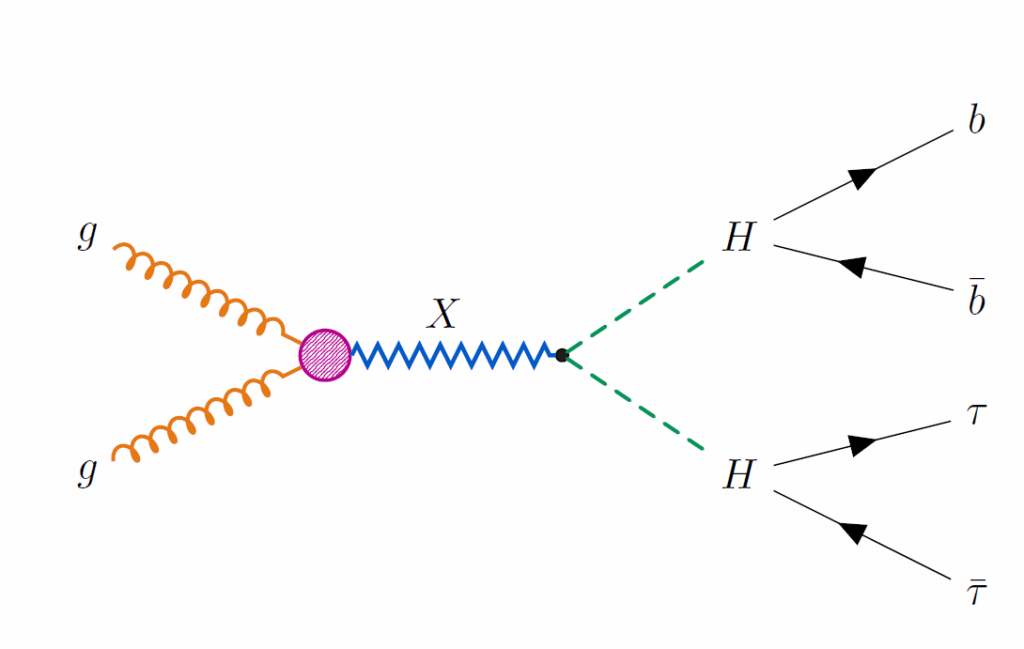
To meet this challenge, CMS uses advanced reconstruction and machine-learning techniques. For the H→bb decay, the bottom quarks form collimated sprays of particles, called jets, which overlap to a large extent. To identify them, a graph neural network, called ParticleNet, is trained to recognize the pattern of the two bottom quark jets inside a single, large jet.
Reconstructing the H→ττ is a two-step process: first, we untangle and reconstruct the two really close taus, and then we use a convolutional neural network, called Boosted DeepTau to figure out the characteristics of these reconstructed taus and tell them apart from background jets. Because tau leptons also produce invisible neutrinos, we apply a likelihood-based method to obtain the four-momentum of the parent Higgs boson.
Once both Higgs bosons are reconstructed, we can combine them to measure the mass of the system. If a new heavy particle exists, it would appear as a peak, or “bump,” on top of the smoothly falling background distribution. This strategy is often referred to as a “bump hunt” – a classic tool in the search for new particles at colliders.
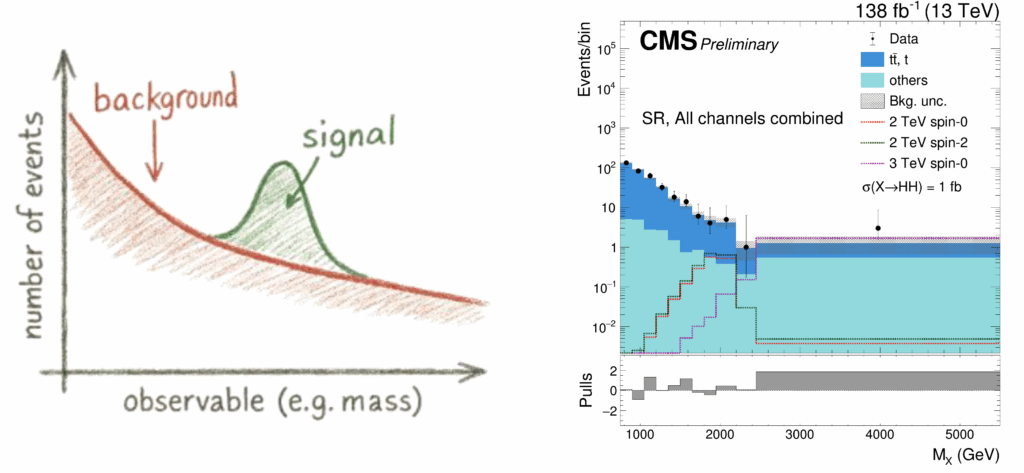
After analyzing data from the full LHC Run 2 (2016–2018), CMS did not observe any significant deviation from the standard model prediction. While this means that no new particle was discovered in this final state yet, the analysis sets the most stringent upper limits to date on the possible production of heavy particles decaying into Higgs boson pairs in the bbττ final state in the mass range of 1.4 TeV to 4.5 TeV.
“The results may not yet show evidence of new physics, but they are paving the way,” says Ganesh Parida, a PhD student at the University of Wisconsin–Madison, who carried out this analysis together with Camilla Galloni and Deborah Pinna, both scientists at the University of Wisconsin–Madison and members of CMS. “It has been both exciting and rewarding to learn, develop, and apply sophisticated techniques to probe these challenging boosted regimes.”
The biggest challenge here is the sheer number of events we can collect for these difficult “boosted” scenarios. That is why the ongoing Run 3 and the upcoming High-Luminosity runs of the LHC are so important – they will give us the biggest datasets ever for a potential discovery!
Karle, Lu lead team awarded Research Forward funding
This post is modified from the original
The Office of the Vice Chancellor for Research (OVCR) hosts the Research Forward initiative to stimulate and support highly innovative and groundbreaking research at the University of Wisconsin–Madison. The initiative is supported by the Wisconsin Alumni Research Foundation (WARF) and will provide funding for 1–2 years, depending on the needs and scope of the project.


Research Forward seeks to support collaborative, multidisciplinary, multi-investigator research projects that are high-risk, high-impact, and transformative. It seeks to fund research projects that have the potential to fundamentally transform a field of study as well as projects that require significant development prior to the submission of applications for external funding. Collaborative research proposals are welcome from within any of the four divisions (Arts & Humanities, Biological Sciences, Physical Sciences, Social Sciences), as are cross-divisional collaborations.
Nine projects were chosen for funding in Round 5 of Research Forward (2025), including one from Physics:
Artificial intelligence is rapidly expanding across all fields of science, particularly in physics. The 2024 Nobel Prize in Physics was awarded for groundbreaking advancements in artificial intelligence that have led to significant discoveries in various physics applications. This project uses a specific type of AI, generative AI, to achieve breakthroughs in diverse particle physics research applications.
Analyzing and understanding the results of high-energy particle interactions using traditional methods requires immense computing resources. Even a single particle collision can involve billions of calculations. This research will enable substantial shortcuts in calculating the outcomes of particle interactions for fundamental physics and astrophysics.
The collaborative research between physicists and computer scientists will significantly improve data use, enabling discoveries that would otherwise be impossible. Medical physics applications, such as radiation therapy, are also envisioned.
PRINCIPAL INVESTIGATOR
Albrecht Karle, professor of physics
CO-PRINCIPAL INVESTIGATORS
Yong Jae, associate professor of computer science
Lu Lu, assistant professor of physics
CO-INVESTIGATOR
Benedikt Riedel, computing manager for WIPAC
Search for boosted Higgs advances our understanding of dark matter
This story, featuring physics graduate student Shivani Lomte, was originally published by the CMS collaboration
The CMS Collaboration hunts for Higgs bosons recoiling against dark matter particles
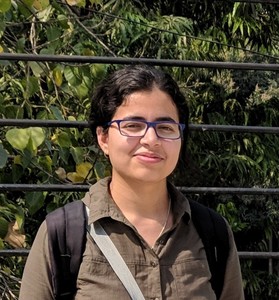
Dark matter is one of the most perplexing mysteries of our universe, accounting for roughly 27% of its total energy. Dark matter does not emit, absorb, or reflect light, and is thus invisible to telescopes. However, its effects on gravitation are unmistakable. Although dark matter’s elementary nature remains unknown, scientists hypothesize that it might be made up of weakly interacting massive particles (WIMPs) that rarely interact with ordinary matter.
In the CMS experiment, we use the fundamental law of momentum conservation to infer the possible presence of dark matter in the detector. In particular the momentum in the transverse plane should be conserved before and after the proton-proton (pp) collision – in other words, the sum of all particle momenta combined should balance out. If momentum is missing, then this suggests that an ‘invisible’ particle, for instance a dark matter particle, has carried that momentum away. Since dark matter doesn’t interact with the detectors, we can’t directly observe it. To detect its presence, we use a ‘visible’ known particle that recoils against the dark matter particle, providing a detectable signal in the experiment. An example of this type of process is shown in Fig. 1.
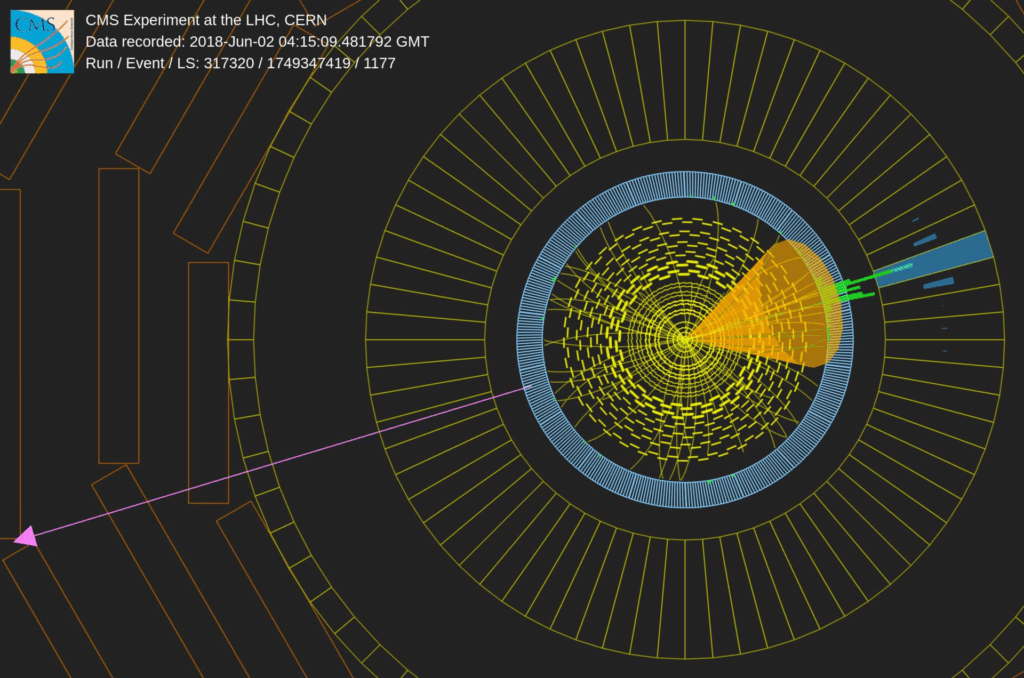
In pp collisions, a photon, ‘jet’, W or Z boson can be emitted from the initial quark within the proton, whereas radiating a Higgs boson is extremely rare given its small coupling to the quarks. Higgs bosons might be preferentially emitted through a new particle acting as a ‘mediator’ between the standard model and dark matter sector. There is a unique possibility at LHC to produce the mediator particle and study its interaction with the standard model and dark matter.
This analysis uses the “mono-Higgs” signature to search for dark matter particles, focusing on two scenarios that both involve Higgs bosons decaying to bottom quarks. If the Higgs boson is highly energetic (boosted), its decay products become collimated and can be reconstructed in a single large-radius ‘jet’. Alternatively, if the Higgs is not as energetic, we instead look for two small-radius jets, one from each bottom quark. The two scenarios are illustrated in Fig. 2.

“A key challenge in this search is that the dark matter signal is rare (at best) and well-known processes, as described in the standard model, produce very similar signatures. To reduce the backgrounds from known particles, we use distinguishing features like the momentum and energy distribution of the particles” says Shivani Lomte, a graduate student at the University of Wisconsin-Madison, leading this search. The precise estimation of the background is critical and is achieved using so called control regions in the data. Such control regions are dominated by background processes and this allows us to quantify the amount of backgrounds in the signal region where we search for dark matter.
In this analysis, once the backgrounds were well-understood, we looked for the dark matter signal by comparing the observed data distributions to the predicted backgrounds, looking for discrepancies. Unfortunately, the observed data agrees with the standard model predictions, and so we conclude that our result has no sign of dark matter. We can thus rule out those types of dark matter particles that would have been detected if they existed.
Regardless of the outcome, the search for dark matter is a journey that pushes the boundaries of human knowledge. Each step brings us closer to answering some of the most profound questions about the nature of the universe and our place within it.
Dark matter and pencil jets: The search for a low-mass Z’ boson using machine learning
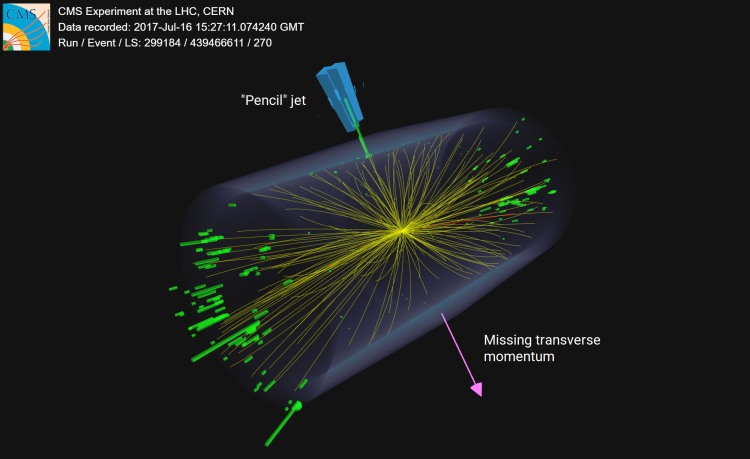
This story, featuring physics grad student Abhishikth Mallampalli, was originally published by the CMS collaboration
The CMS experiment conducts the first search for dark matter particles produced in association with an energetic narrow jet—the pencil jet.
Dark matter remains one of physics’ greatest mysteries. Despite making up about 27% of the universe’s energy content, its true nature is unknown. Astonishingly, all ordinary matter—which includes stars, planets, our phones, the wires transferring data, the waves carrying WiFi, you and me—accounts for just 5% of the total energy content of our universe. If our known world is so diverse, the dark sector, which outweighs it 20-to-1, could be just as rich. At CERN’s CMS experiment, scientists are searching for dark matter particles, aiming to reveal their interactions and revolutionize our understanding of our universe.
But if dark matter is so abundant, why haven’t we detected it? As the name suggests, dark matter does not interact with light (electromagnetism) with the same strength as ordinary matter (the behavior of which is explained by the Standard Model) and, so far, is only known to interact with known particles through gravity, the weakest of the four known fundamental forces. At CMS, scientists use momentum conservation to infer the presence of dark matter: missing momentum in particle collisions (after accounting for detector mismeasurements) could signal an invisible particle, possibly dark matter, slipping away undetected.
In addition to particles that make up dark matter, there could be as yet undetected particles that mediate interactions between the dark particles and the matter particles. These are creatively called, you guessed it, mediators. Such mediators are bosons, implying that they carry integer spin quantum numbers as opposed to fermions (e.g. electrons) which have half-integer spins. One such mediator is the hypothesized Z’ boson, which is electrically neutral and has spin quantum number of 1.
Typical CMS searches focus on heavy Z’ particles in the hundreds of GeV to TeV range, but a lighter Z’ boson could also exist in the dark sector. It is typically a lot more challenging to look for such light particles due to the overwhelming background from hadronic resonances and quantum chromodynamics (QCD) processes—related to the strong nuclear force—which are poorly modeled at low energies. This is where techniques like data augmentation and machine learning can be utilized, enhancing sensitivity to Z’ decays while suppressing known background processes.
The Z’ boson mass that we are looking for in this search is around 1 GeV, and because of the low mass and high boost (momentum) of the Z’ boson, it can only decay to light quarks (u, d, s), which then hadronize to form a jet (a spray of particles) with a lower number of constituents than usual. We then look for dark matter recoiling against such a narrow jet (called a pencil jet). This is the first search at the LHC for this signal. Various selections are applied to reduce the background processes while retaining the signal process and a combination of neural networks and boosted decision trees are used to further extract the signal. Multiprocessing techniques are used to speed up the processing time of the events.
“The main challenge in this analysis of real-world data was that the physically motivated input features aren’t typically well modeled in our simulations and so we had to take steps to ensure model robustness. We showed that using machine learning can help us achieve up to 10 times more sensitivity to these rare signal processes compared to traditional strategies” says Abhishikth Mallampalli, a graduate student at the University of Wisconsin-Madison, leading this search. Statistical hypothesis testing is used to determine whether the observed data agrees with the standard model prediction or suggests the presence of a dark matter signal.
We see that the data agrees well with the standard model expectation across the three years of proton-proton collision data analyzed. While this means that such a Z’ boson with the probed light masses might not exist in our universe at the 95% confidence level, null results in such searches for dark matter not only solidify the standard model but also serve as guidance to theorists in building new physics models for dark matter, and help experimentalists to identify the direction for future searches.
UW–Madison scientists part of team awarded Breakthrough Prize in Physics
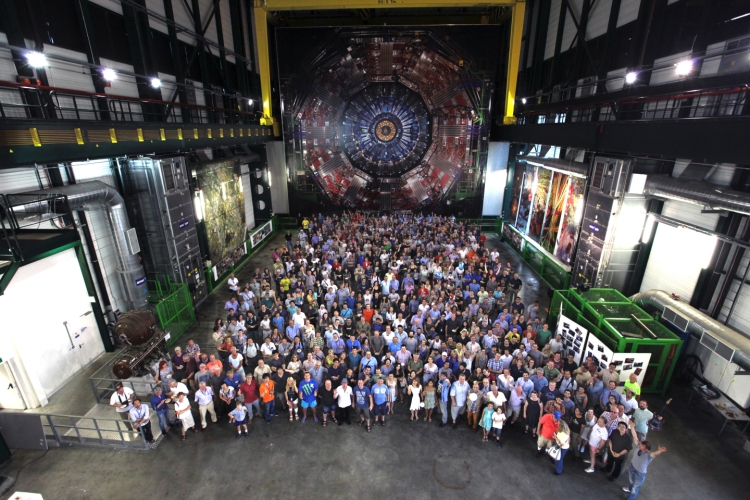
A team of 13,508 scientists, including over 100 from the University of Wisconsin–Madison, won the 2025 Breakthrough Prize in Fundamental Physics, the Breakthrough Prize Foundation announced April 5. The Prize recognized work conducted at CERN’s Large Hadron Collider (LHC) between 2015 and 2024.
The Breakthrough Prize was created to celebrate the wonders of our scientific age. The $3 million prize will be donated to the CERN & Society Foundation, which offers financial support to doctoral students to conduct research at CERN.
Four LHC projects were awarded, including ATLAS and CMS, both of which UW–Madison scientists work on. ATLAS and CMS jointly announced the discovery of the Higgs boson in 2012, and its discovery opened up many new avenues of research. In the years since, LHC researchers have worked towards a better understanding of this important particle because it interacts with all matter and gives other particles their mass. Both teams are actively engaged in analyzing LHC data in search of exciting and new physics.
“The LHC experiments have produced more than 3000 combined papers covering studies of electroweak physics and the Higgs boson, searches for dark matter, understanding quantum chromodynamics, and studying the symmetries of fundamental physics,” says CMS researcher Kevin Black, chair of the UW–Madison department of physics. “This work represents the combined contributions of many thousands of physicists, engineers, and computer scientists, and has taken decades to come to fruition. We are all very excited to be recognized with this award.”
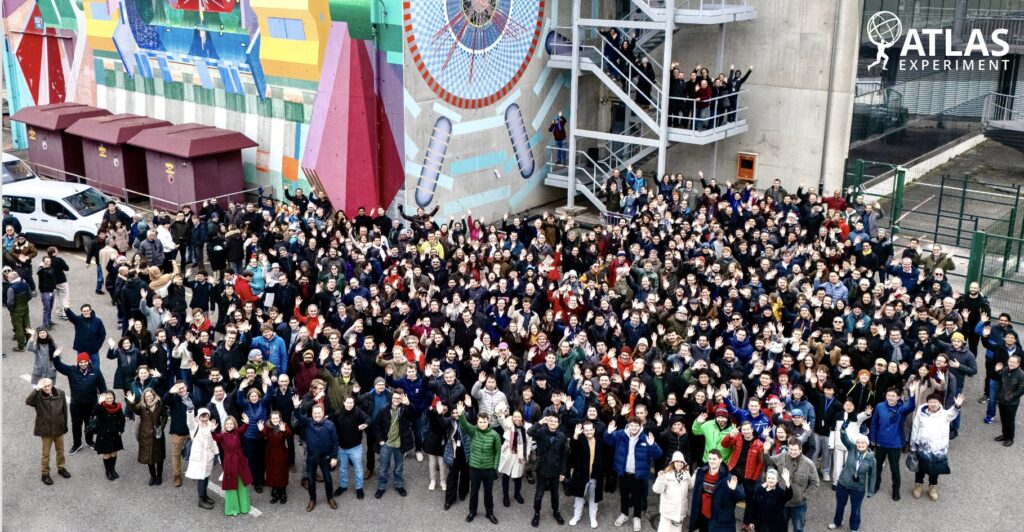
ATLAS and CMS have generally the same research goals, but different technical ways of addressing them. Both detectors probe the aftermath of particle collisions at the LHC and use the detectors’ high-precision measurements to address questions about the Standard Model of particle physics, the building blocks of matter and dark matter, exotic particles, extra dimensions, supersymmetry, and more.
The ATLAS team at UW–Madison has taken a leadership role in both physics analyses and computing. They have spearheaded precision measurements of the Higgs boson’s properties and conducted extensive searches for new physics, including Dark Matter, achieving major sensitivity gains through advanced AI and machine learning techniques. In addition to leading developments in computing infrastructure, the team has played a crucial role in the High-Level Trigger system and simulation efforts using generative AI, further enhancing the experiment’s capabilities.
The CMS team at UW–Madison has played and continues to play key roles in trigger electronics systems, which are ways of sorting through the tens of millions of megabytes of data produced each second by a collider experiment and retaining the most meaningful events. They also manage a large computing cluster at UW-Madison, contribute to the building and operating of muon detectors, make key contributions to CMS trigger and computing operations, and develop physics analysis techniques including AI/ML. The CMS group efforts are well recognized in the recently published compendium of results, dubbed, the Stairway to Heaven.
CMS and ATLAS research at UW–Madison is largely supported by the U.S. Department of Energy, with additional support from the National Science Foundation.
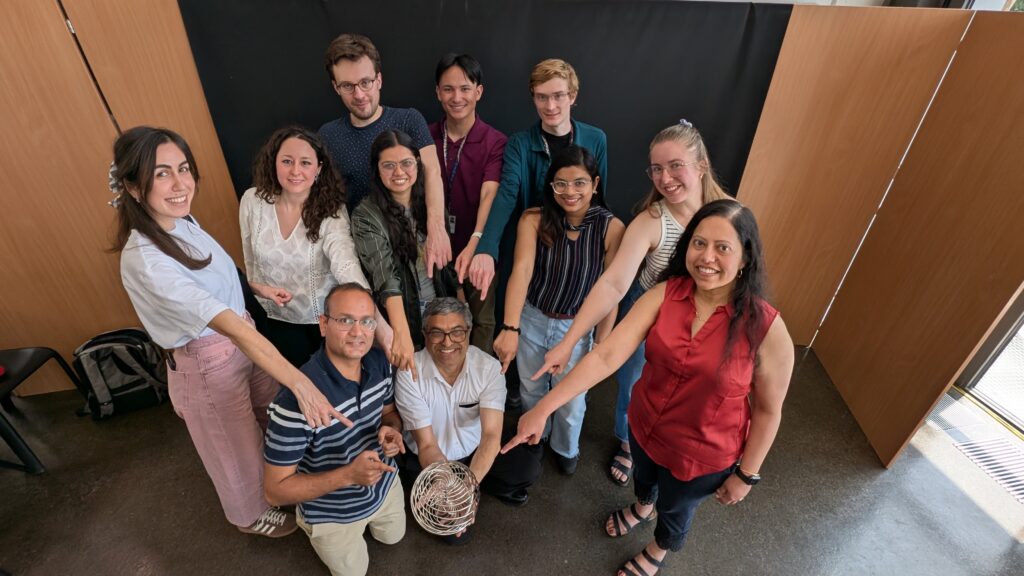
The following people had a UW–Madison affiliation during the time noted by the Prize:
Current Professors
Kevin Black, Tulika Bose, Kyle Cranmer, Sridhara Dasu, Matthew Herndon, Sau Lan Wu
Current PhD Physicists
Pieter Everaerts, Matthew Feickert, Camilla Galloni, Alexander Held, Wasikul Islam, Charis Koraka, Abdollah Mohammadi, Ajit Mohapatra, Laurent Pétré, Deborah Pinna, Jay Sandesara, Alexandre Savin, Varun Sharma, Werner Wiedenmann
Current Graduate Students
Anagha Aravind, Alkaid Cheng, He He, Abhishikth Mallampalli, Susmita Mondal, Ganesh Parida, Minh Tuan Pham, Dylan Teague, Abigail Warden
Current Engineering Staff
Shaojun Sun
Current Emeriti
Sunanda Banerjee (Senior Scientist), Richard Loveless (Distinguished Senior Scientist), Wesley H. Smith (Professor)
Alumni
Michalis Bachtis (Ph.D. 2012), Swagato Banerjee (Postdoc 2015), Austin Belknap (Ph.D. 2015), James Buchanan (Ph.D. 2019), Cecile Caillol (Postdoc), Duncan Carlsmith (Professor), Maria Cepeda (Postdoc), Jay Chan (Ph.D. 2023), Stephane Cooperstein (B.S. 2014), Isabelle De Bruyn (Scientist), Senka Djuric (Postdoc), Laura Dodd (Ph.D. 2018), Keegan Downham (B.S. 2020), Evan Friis (Postdoc), Bhawna Gomber (Postdoc), Lindsey Gray (Ph.D. 2012), Monika Grothe (Scientist), Wen Guan (Engineer with PhD 2022), Andrew Straiton Hard (Ph.D. 2018), Yang Heng (Ph.D. 2019), Usama Hussain (Ph.D. 2020), Haoshuang Ji (Ph.D. 2019), Xiangyang Ju (Ph.D. 2018), Laser Seymour Kaplan (Ph.D. 2019), Lashkar Kashif (Postdoc 2019), Pamela Klabbers (Scientist), Evan Koenig (BS 2018, Intern), Amanda Kaitlyn Kruse (Ph.D. 2015), Armando Lanaro (Senior Scientist), Jessica Leonard (Ph.D. 2011), Aaron Levine (Ph.D. 2016), Andrew Loeliger (Ph.D. 2022), Kenneth Long (Ph.D. 2019), Jithin Madhusudanan Sreekala (Ph.D. 2022) Yao Ming (Ph.D. 2018), Isobel Ojalvo (Ph.D. 2014, Postdoc), Lauren Melissa Osojnak (Ph.D. 2020), Tom Perry (Ph.D. 2016), Elois Petruska (BS, 2021), Yan Qian (Undergraduate Student 2023), Tyler Ruggles (Ph.D. 2018, Postdoc), Tapas Sarangi (Scientist), Victor Shang (Ph.D. 2024), Manuel Silva (Ph.D. 2019), Nick Smith (Ph.D. 2018), Amy Tee (Postdoc, 2023), Stephen Trembath-Reichert (M.S. 2020), Ho-Fung Tsoi (Ph.D. 2024), Devin Taylor (Ph.D. 2017), Wren Vetens (Ph.D. 2024), Alex Zeng Wang (Ph.D. 2023), Fuquan Wang (Ph.D. 2019), Nate Woods (Ph.D. 2017), Hongtao Yang (Ph.D. 2016), Fangzhou Zhang (Ph.D. 2018), Rui Zhang (Postdoc, 2025), Chen Zhou (Postdoc 2021)
NOvA study sets tighter limit on sterile neutrinos
Neutrinos have always been difficult to study because their small mass and neutral charge make them especially elusive. Scientists have made a lot of headway in the field and can now detect three flavors, or oscillation states, of neutrinos. Other flavors continue to be elusive — though that could be because they don’t even exist.
Sterile neutrinos, a flavor that has been proposed to play a role in neutrino mass generation and causing the oscillations of other neutrinos, have been hinted at in previous experiments but never detected. In a study published February 26 in Physical Review Letters, NOvA collaboration scientists did not find evidence of sterile neutrinos, but their work puts the tightest constraints on parameter space to date for where sterile neutrinos could be found.
“Neutrinos are really interesting because they can give a window into some really big questions for physics, including the question of the matter-antimatter asymmetry and why the universe exists at all,” says co-lead author Adam Lister, a postdoctoral researcher in physics professor Brian Rebel’s group at the University of Wisconsin–Madison and member of the NOvA collaboration. “It turns out you can get at these questions with neutrino oscillations, and in this paper, we tried to address the question of, ‘What if there are more types of neutrinos that we haven’t yet been able to observe?’”

Sterile neutrinos have been proposed for a couple of decades, when previous experiments showed results that could best be explained by the existence of a fourth (or greater) flavor of neutrino.
“There are a number of experiments that claim that they see something consistent with this new neutrino, and there’s a bunch of other experiments that have looked for those same neutrinos and seen nothing whatsoever,” Lister says. “It’s a very open question right now.”



To search for sterile neutrinos, the NOvA experiment produces a beam of one flavor of neutrino, muon neutrinos, at Fermilab and directs it toward two detectors: a near detector about one kilometer from the beam source, and a far detector around 800 kilometers away in Ash River, MN. Previous NOvA analyses measured only the neutral current disappearance rate, where any of the three flavors of neutrinos converts to another particle when it interacts with a detector. So in this new study, the researchers knew that if they observe an unexpected change in the total number of neutrinos, it suggests that sterile neutrinos did in fact influence the other types.
Earlier NOvA work only measured this rate at the far detector, because it was the best developed analysis strategy available at the time. However, it assumed that sterile neutrinos could not influence the other neutrinos in the first kilometer. Here, the team used updated software and improved simulations to analyze neutral current rate changes at both near and far detectors, but these results did not deviate from the expected three-flavor model.
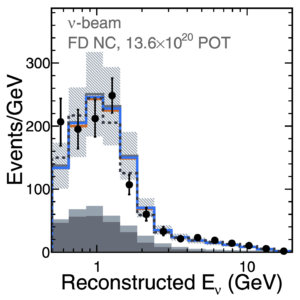
Second, they introduced an additional sample, known as muon neutrino charged current interactions, or the disappearance specifically of muon neutrinos at both the near and far detectors. Small changes from the expected rate could also indicate the influence of sterile neutrinos, but again, they did not observe a statistically significant rate difference.
Combined with the fact that the team applied their analyses to six years of cumulative data — all the data of previous NOvA analyses plus newer data — this new study offers NOvA’s most powerful analysis of sterile neutrino physics to date. Though the study could not confirm the existence of sterile neutrinos, NOvA scientists were able to search the four different samples together simultaneously, allowing them to rule out certain parameter combinations that are physically incompatible with sterile neutrinos.
“Our results agree with the standard three-flavor oscillation model, at least with the statistical uncertainties we have,” Lister says. “What we can say right now is that NOvA sets some of the strongest limits on the existence of the sterile neutrinos.”
The NOvA experiment could not confirm the existence of the sterile neutrino. IceCube, led by UW–Madison, performs complementary searches using atmospheric and astrophysical neutrinos and has also not found any evidence for sterile neutrinos.
These results are also critical to informing the analyses of the next-gen accelerator-based neutrino detector, DUNE, which Lister and colleagues at UW–Madison are already developing.
This study was published by the NOvA collaboration, centered at Fermilab, and largely led by scientists at UW–Madison (Lister, Rebel, and former graduate student Harry Hausner) and the University of Cincinnati (postdoctoral researcher V. Hewes and physics professor Adam Aurisano).
This work was supported by the U.S. Department of Energy; the U.S. National Science Foundation; the Department of Science and Technology, India; the European Research Council; the MSMT CR, GA UK, Czech Republic; the RAS, MSHE, and RFBR, Russia; CNPq and FAPEG, Brazil; UKRI, STFC and the Royal Society, United Kingdom; and the state and University of Minnesota.
Welcome, Prof. Jakob Moritz!
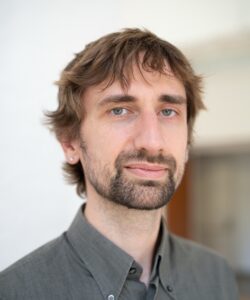
String theorist Jakob Moritz joined the faculty as an assistant professor of physics on January 1, 2025. He joins us from CERN where he has been a postdoc for just over a year. Previously, he was a postdoc for four years at Cornell University, and before that, he earned his PhD from the University of Hamburg and DESY.
Please give a general overview of your research.
I work on string theory, a theoretical framework for quantum gravity. It is the only known approach that consistently combines quantum mechanics and Einstein’s theory of gravity. Physicists have struggled for decades to reconcile these two fundamental theories, and string theory achieves this unification. Sometimes called “the theory of everything,” string theory addresses physical phenomena at arbitrarily high energies. While the nickname may sound a bit grandiose, it highlights the theory’s incredible scope.
However, while the field equations of string theory have solutions that are relatively easy to study, these don’t resemble our universe. My research focuses on going beyond these “easy” solutions to find ones that better match the universe we observe. By doing so, I aim to uncover insights into the origins of the peculiar laws of physics governing our universe.
Something that I find particularly interesting is dimensionless constants of nature. These constants are significant because they are independent of a choice of units. For example, the ratio of the electron’s mass to the top quark’s mass is a dimensionless number — about 0.000003, which is remarkably small! There are many such constants whose values are determined experimentally, yet we lack a theoretical explanation for them.
In the early 20th century, particle physicists didn’t focus much on questions like, “Why are the constants of nature what they are, and not something else?” But with string theory, we can begin to address this. My work seeks to identify solutions of string theory in which these numbers align with experimental values. Another well-known example is the energy density of the vacuum, or dark energy. Despite being the dominant energy source in the universe today, dark energy is extraordinarily small in natural units — just 10^{-120} when compared to the natural energy scale of quantum gravity. This discrepancy, known as the cosmological constant problem, is something I find deeply intriguing. How can such a small value arise? Why isn’t it zero? Similarly, why is the Higgs mass so small? These are the kinds of profound questions I aim to explore through string theory.
What are one or two main projects you’ll have new group members work on?
One major project will involve finding the Standard Model of particle physics within string theory. This is something I am already working on, but having more hands on deck would be invaluable. The goal is to “engineer” realistic laws of particle physics — either the Standard Model or something close to it — as solutions of string theory. This work is crucial for addressing the electroweak hierarchy problem: why is the Higgs mass so unnaturally small? Currently, no one has a clear explanation for this.
Technically, this involves a lot of geometry. String theory predicts the existence of extra dimensions, which are both a blessing and a curse. They must be small enough to have remained unobservable, yet they also determine the physical laws we experience at larger scales. Much of our work will focus on understanding these geometries — particularly how certain objects, called branes, wrap around features like circles in these spaces — and calculating the resulting physical laws.
What attracted you to Madison and the university?
I really appreciate the breadth of the theory department here. String theory is a vast field, encompassing topics that range from almost pure mathematics to particle phenomenology. Because my work leans toward the phenomenological side, it intersects with many other areas of theoretical physics, including cosmology, particle physics, and applied mathematics. Being at a large place like Madison, with its diverse and talented faculty, is incredibly exciting.
Additionally, I know that Madison attracts outstanding students who are eager to work on string theory and particle physics. That’s something I’m looking forward to as well!
What is your favorite element and or elementary particle?
Neutrinos are cool because they’re almost massless. For a long time, they were thought to have zero mass, as predicted by the Standard Model of particle physics. But experiment has revealed otherwise! This discovery hints strongly at new physics at high energies.
What hobbies and interests do you have?
I love music! I play piano and guitar, and music is a big part of my life, especially since my partner is also a musician. I also enjoy sailing. While at Cornell, I spent summers sailing and participated in weekly competitive races, which were incredibly fun. I know that sailing is also a thing here — I look forward to getting back on the water!